Klantenservice
Copyright © 2025 Desertcart Holdings Limited
Desert Online General Trading LLC
Dubai, United Arab Emirates







Full description not available

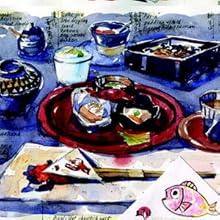

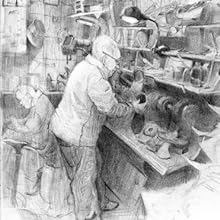
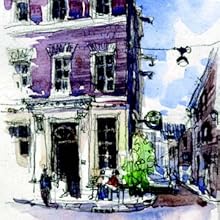
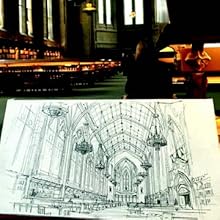

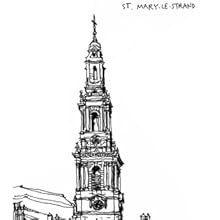
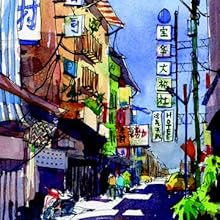
A**R
Great all-around book of tips
I love Stephanie's work and have had the pleasure of participating in her "Good Bones" workshop in San Antonio, so I was excited for the release of this book. If I'm being generous, I'd describe myself as an intermediate sketcher. I've dabbled in urban sketching for several years, although most of the time I still feel like a beginner.So, for me, this book is a pretty comprehensive list of what many urban sketchers think about or should think about. It's probably not a book for a beginner who has just opened a brand-new sketch book to the first blank page, because it's not step-by-step, detailed instruction; rather, it's tips. It's for someone who has done some sketching and is starting to have questions like, why does one side of my building look crooked? why do my trees look cartoony? and, really, how should I start a sketch? You can read straight through to find these answers or skip around. Reading cover-to-cover may be overwhelming, because there's a lot here. Personally, I'm trying to focus on one question at a time and saving the rest for later.Stephanie is a thoughtful and encouraging teacher who is especially talented at simplifying puzzling concepts. She is an architect, and she loves perspective, so this book does lean into that. Her other book in this series, Understanding Perspective, is completely the more in-depth version of that material. Here, she steps back a bit and gives you basic tips on perspective for a good jump-start into making your buildings believable and fills the rest of the book with tips on other topics like composition, paint, the spirit of sketching, etc.Believable structures are usually a primary concern for urban sketchers, since we're often sketching in structure-filled environments. However, urban sketching is different for everyone. If your interest is primarily documenting people or the natural environment, you may want a different book. For an urban sketching guidebook that's oriented toward buildings, this book's content is right on point and well-balanced. That said, I really think everyone will find valuable information and inspiration here.The book contains many examples of Stephanie's work, and, aligning with the approach of other books in this series, she also explains her points through sketches from other experienced urban sketchers who work in a variety of styles and media. Stephanie works in pencil and wash, and most of the other examples in the book are traditional ink and wash, but ProCreate on an iPad is also represented.As a side note, I find it odd that one reviewer complained about the lack of examples by female artists in the book. First, I've never observed or considered any sort of gender bias in urban sketching, only massive amounts of amazing work by extremely talented artists, so who cares (I'm a woman, btw); and second, refer to the list of contributors in the back.
M**N
A "must have" for anyone sketching on location
The Urban Sketching Handbook series is flat out the best and most encyclopedic reference for anyone sketching, drawing, or painting on location. The latest title to join the series, Stephanie Bower's 101 Sketching Tips doesn't disappoint either. First off, ignore the title because Bower shares far more than 101 tips and strategies. Illustrations from Urban Sketchers hailing from every point on the globe are included to help readers clearly visualize the concepts being shared, including many of Bower's own fine sketches.As a professional illustrator and a visual art educator for four decades, I have seen a lot of books offering advice; only a few of them have measured up to the hype. Happily, this is one of them. What I really appreciate about this book is the way it's organized into "Keys" - groups of concepts that are related. Thumbing through the book, there are (naturally enough) strategies with many readers will already be familiar. I regularly found myself reading a tip and thinking to myself, "Oh, right! Why haven't I tried that in a while?" Being reminded of things we already know (but don't always put into practice!) is a really good thing. And then there are those brand new ideas that I feel like smacking myself in the head over: "Now why the heck did I never think of doing things THAT way?" There are plenty of gold nuggets sprinkled throughout, and enough to make this a valuable resource for most any artist working in situ.For those who like to carry stuff with them into the field, I also find the books in this series to be really handy in that one will easily fit into the hip pocket of my Levi's!
A**R
Highly recommended—Crammed full of useful tips
I preordered this book in July, knowing that it would be fabulous, and it is. It is packed full of useful information, and the 101 tips are illustrated for added clarity. I paid for this book, and despite the fact that I also own Perspective for Sketchers, (Stephanie Bower’s book in a similar format) and have traveled cross country to attend one of her architectural workshops in person, there is great value to me in having these ‘best of’ tips collected in a book. There is information new to me in this book. It’s also an opportunity to view the work of gifted artists from around the world, MANY of whom are women. (I counted 14, but there are probably more!) Stephanie’s writing is quite similar to her instruction in person—clear, concise, and understandable. This book is highly recommended!
K**R
Love the Techniques Tips, Stunning Sketches
I love the tips, the beautiful sketches, the handbook size and would recommend this handbook to anyone who urban sketches. I wish that the handbook would fold flat.
M**T
Author covers a lot of territory!
This is not a beginners how-to-draw book. However, if you have already pretty much got the basics down and are interested in urban sketching, this book is packed with good tips and techniques to either jump in and start or to improve on your work. There is an excellent chapter on eye level, which you must be able to identify and work from. I always had a hard time with the term “horizon line” because there are so many situations, especially in urban settings or still life drawings, where there is no horizon as I conceived of it. I always thought of the horizon in terms of the prairie or the ocean—you know, where you could actually see to the horizon. I was so grateful to finally find out that “horizon” was the equivalent of your eye level. This author devotes an entire chapter to identifying the eye level and vanishing point, which are so very necessary for determining the correct direction and angles of your lines. If you learn nothing else from this book, that one chapter is worth the price.
Trustpilot
1 dag geleden
5 dagen geleden